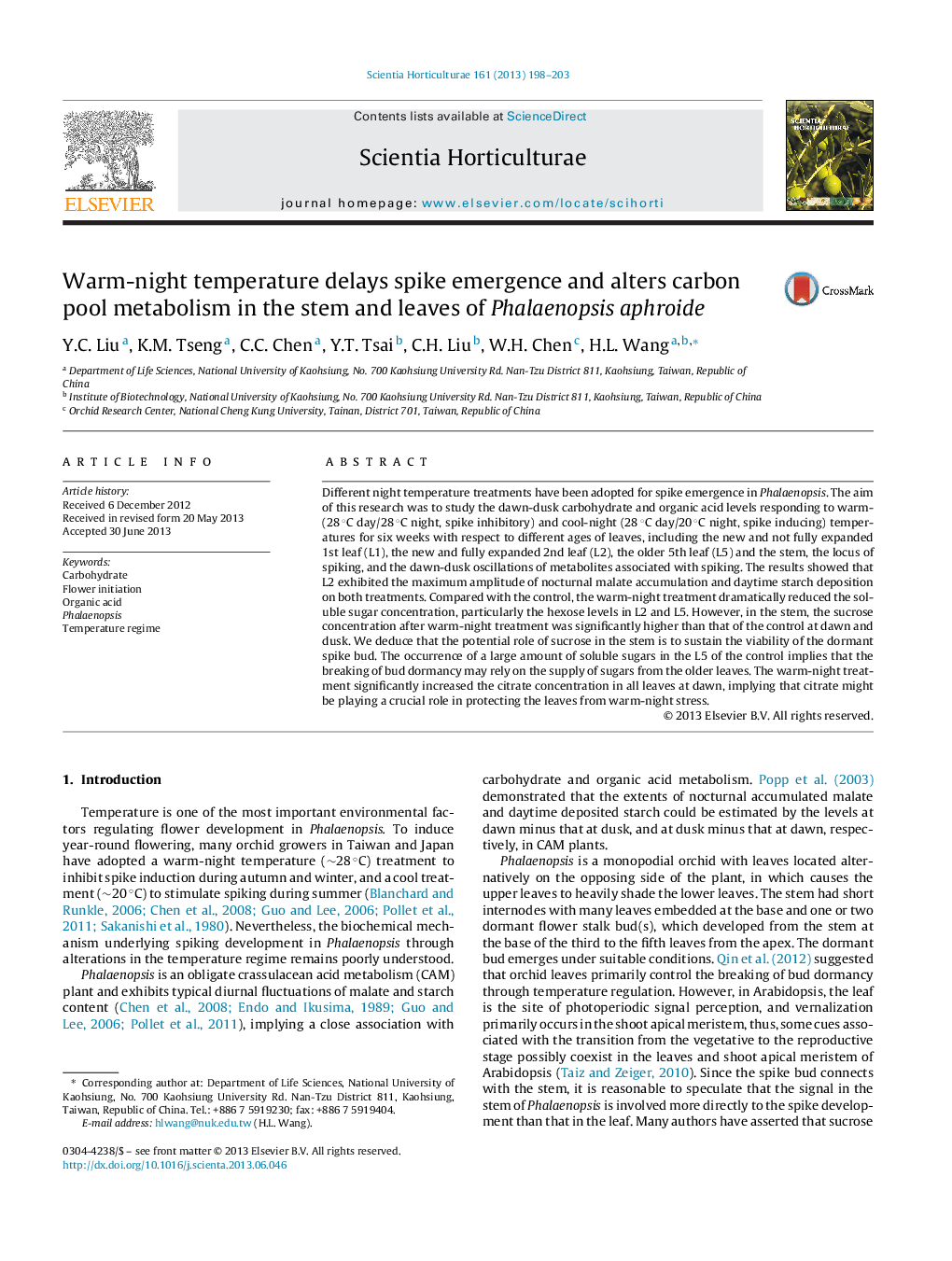| کد مقاله | کد نشریه | سال انتشار | مقاله انگلیسی | نسخه تمام متن |
|---|---|---|---|---|
| 4567159 | 1628837 | 2013 | 6 صفحه PDF | دانلود رایگان |

• The new and fully expanded leaf exhibited the maximum diurnal fluctuations of malate and starch concentrations on warm- and cool-night (control) treatments.
• The sucrose concentrations in the stem on both treatments were significantly higher than those in the different ages of leaves.
• Warm-night temperature delayed the spike emergence of Phalaenopsis.
• The sucrose concentration in the stem on the warm-night treatment was significantly higher than that of the control.
• The potential role of sucrose in the stem is to sustain the viability of the dormant spike bud.
Different night temperature treatments have been adopted for spike emergence in Phalaenopsis. The aim of this research was to study the dawn-dusk carbohydrate and organic acid levels responding to warm- (28 °C day/28 °C night, spike inhibitory) and cool-night (28 °C day/20 °C night, spike inducing) temperatures for six weeks with respect to different ages of leaves, including the new and not fully expanded 1st leaf (L1), the new and fully expanded 2nd leaf (L2), the older 5th leaf (L5) and the stem, the locus of spiking, and the dawn-dusk oscillations of metabolites associated with spiking. The results showed that L2 exhibited the maximum amplitude of nocturnal malate accumulation and daytime starch deposition on both treatments. Compared with the control, the warm-night treatment dramatically reduced the soluble sugar concentration, particularly the hexose levels in L2 and L5. However, in the stem, the sucrose concentration after warm-night treatment was significantly higher than that of the control at dawn and dusk. We deduce that the potential role of sucrose in the stem is to sustain the viability of the dormant spike bud. The occurrence of a large amount of soluble sugars in the L5 of the control implies that the breaking of bud dormancy may rely on the supply of sugars from the older leaves. The warm-night treatment significantly increased the citrate concentration in all leaves at dawn, implying that citrate might be playing a crucial role in protecting the leaves from warm-night stress.
Journal: Scientia Horticulturae - Volume 161, 24 September 2013, Pages 198–203